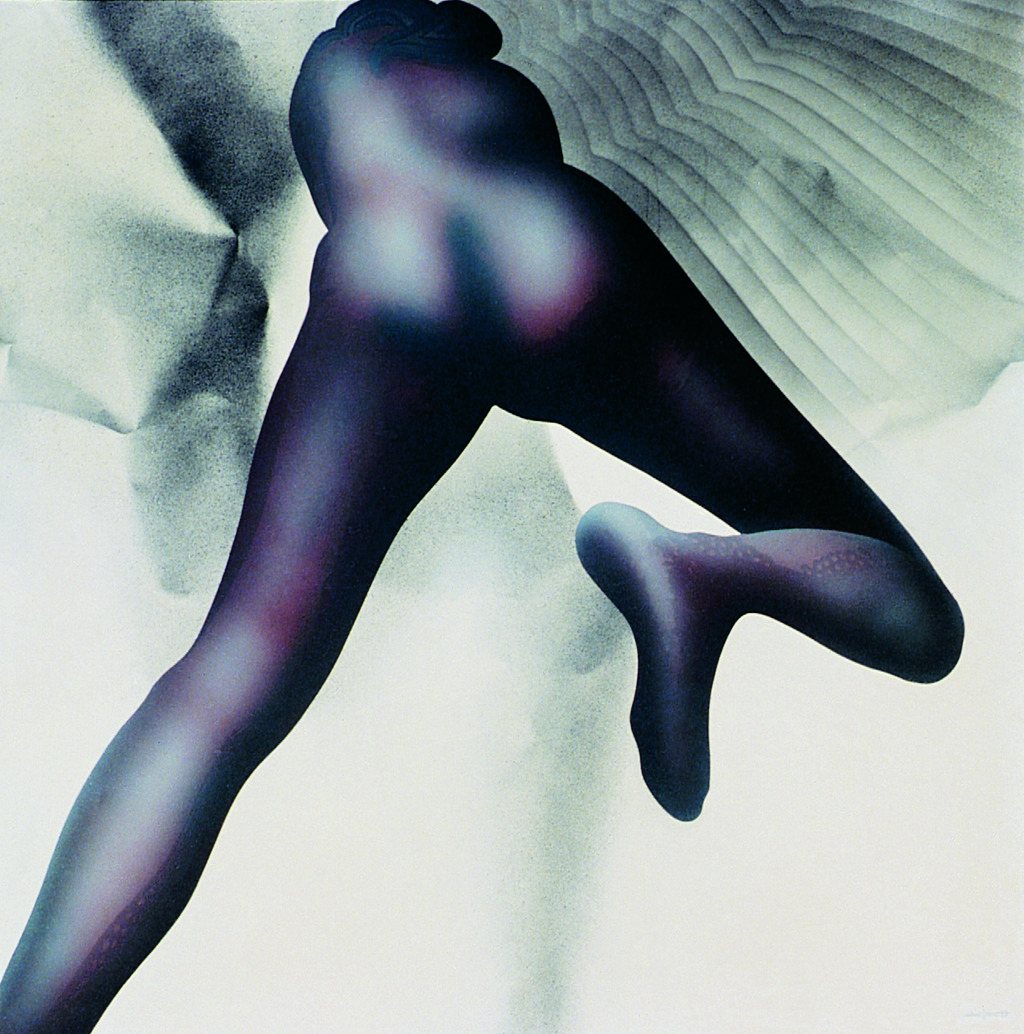La fugida (Flight)
Sensuality and hope go hand-inhand in this painting. The artist offers a glimpse of desire that expresses a wish to make this world a better place. The denunciation of oppression always enshrines a yearning for freedom. There comes a moment when rejecting domination becomes a desire for emancipation that frees the individual from the shackles that bind him. In this work, Antoni Miró appeals to the duality between the need to flee and the impulse to do so.
As Gamoneda stressed, “the critical efficacy” of the artist’s work lies in the power of its “signalling system”. The work combines a strong informational elementariness (for example, in the economy of expressive media, to which Blasco Carrascosa refers) and the graphical techniques “constituting a visual code that typifies this technological age of the masses”. Together, they make for highly effective communication of ideas.
The work does not yet embrace the degree of hyper-realism that Miró was to exhibit later on. In some ways, it seeks expressiveness through some of the techniques the artist had experimented with at the end of the previous decade (in this case, airbrushing), but continues to use methods akin to those used in industrial printing.
The message in this work is conveyed in the simplest terms, with a single character used to symbolise the need for social change. Here, the depiction of the female body is not only an object of desire but also symbolises the possibility of liberation. A nude woman is shown from behind, suggesting a new beginning. The flight is taken as the beginning of a fairer life, of a future offered to the viewer, who stays behind facing towards that same destination.
The dialectic between the background and the figure occurs within a clearly-defined frame. The background, which is mostly white, is given depth through air-brushed gradients simulating wrinkled paper. Dynamism is conveyed by vibration along one edge of the figure. The figure is modelled in a range of dark tones, which are enhanced by clear reflections in the most prominent parts of the volume.
The centrality of the work, with its main part above the canvas’ mid-point, provides the composition with structure. The torso and visible part of the head are apparently aligned with the vertical axis that splits the picture into two roughly equal halves. The visual tension is produced by the especial arrangement of the woman’s legs. One leg comes from one of the bottom corners, leaving the foot out of the picture. The other leg bends at the knee and shows itself with torsion, tracing a line that runs through her whole body.
In short, we are dealing with a work that spurs action and makes it clear that there are scenarios offering greater freedom, later on. The artist incites the viewer to consummate the process by acting rather than merely being a passive observer, spurring participation.
Santiago Pastor Vila
